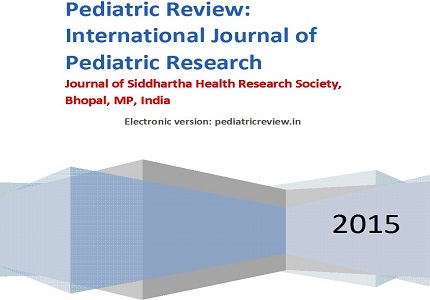Prevalence of obesity among the school going adolescents in urban Bangalore
Abstract
Background: Obesity, one of the most widespread and major problems affecting children and adolescents is of global nutritional concern. We conducted this study to estimate the prevalence of obesity among urban Bangalore school going adolescents.
Material and Methods: School based cross-sectional study was conducted in schools in Bangalore during December 2012 to November 2013. The students were given a pre-designed structured questionnaire which consisted of questions to be answered by the student, with the help of his/her parents at home. Anthropometric measurements were taken to determine the prevalence of obesity.
Results: This was an observational study consisting of 748 children is undertaken to study the prevalence of obesity. Prevalence of obesity in adolescents was found to be 5.9% in the present study. Prevalence of obesity was highest among in 15 year old adolescents (9.3%) as compared to the overall prevalence of 5.9% (p = 0.039). The prevalence of obesity among adolescents had a birth weight >3.5kg was 10.7% (p= 0.069). Among obese adolescents, 79.5% had mixed diet pattern. Among adolescents with family history of obesity, 22.9% were obese as compared to 4.1% prevalence of obesity among adolescents without family history of obesity. Majority of obese adolescents belonged to upper middle class socioeconomic status (9.6%) (p = 0.028).
Conclusion: There is a significant prevalence of obesity among adolescents of urban Bangalore. Mixed diet, upper middle class SES and family history of obesity have a strong correlation with the prevalence of obesity in adolescents.
Downloads
References
2. Must A, Jacques PF, Dallal GE, Bajema CJ, Dietz WH. Long-term morbidity and mortality of overweight adolescents. A follow-up of the Harvard Growth Study of 1922 to 1935. N Engl J Med. 1992 Nov 5;327(19):1350-5. [PubMed]
3. Hill Jo and Trowbridge FL(Ed). Symposium on the causes and health consequence of obesity in children and adolescents. Pediatrics. 1998; 101: S497-S574. [PubMed]
4. Dietz WH. Overweight in childhood and adolescence. N Engl J Med. 2004 Feb 26;350(9):855-7. [PubMed]
5. Moran R. Evaluation and treatment of childhood obesity. Am Fam Physician. 1999 Feb 15;59(4):861-8, 871-3. [PubMed]
6. Ogden CL, Flegal KM. Changes in terminology for childhood overweight and obesity. Natl Health Stat Report. 2010 Jun 25;(25):1-5. [PubMed]
7. Kapil U, Singh P, Pathak P, Dwivedi SN, Bhasin S. Prevalence of obesity amongst affluent adolescent school children in delhi. Indian Pediatr. 2002 May;39(5):449-52. [PubMed]
8. Sawaya AL, Dallal G, Solymos G, de Sousa MH, Ventura ML, Roberts SB, Sigulem DM. Obesity and malnutrition in a Shantytown population in the city of São Paulo, Brazil. Obes Res. 1995 Sep;3 Suppl 2:107s-115s. [PubMed]
9. Sidhu S, Marwah G, Prabhjot. Prevalence of overweight and obesity among the affluent adolescent school children of Amritsar, Punjab. Coll Antropol. 2005 Jun;29(1):53-5. [PubMed]
10. Priftis KN, Panagiotakos DB, Anthracopoulos MB, Papadimitriou A, Nicolaidou P. Aims, methods and preliminary findings of the Physical Activity, Nutrition and Allergies in Children Examined in Athens (PANACEA) epidemiological study. BMC Public Health. 2007;7:140.
11. Ramachandran A, Snehalatha C, Vinitha R, Thayyil M, Kumar CK, Sheeba L, Joseph S, Vijay V. Prevalence of overweight in urban Indian adolescent school children. Diabetes Res Clin Pract. 2002 Sep;57(3):185-90. [PubMed]
12. Warraich HJ, Javed F, Faraz-Ul-Haq M, Khawaja FB, Saleem S. Prevalence of obesity in school-going children of Karachi. PLoS One. 2009;4(3):e4816. doi: 10.1371/journal.pone.0004816. Epub 2009 Mar 24. [PubMed]
13. Neutzling MB, Taddei JAAC, Gigante DP. Risk factors of obesity among Brazilian adolescents: a case-control study. Public Health Nutr [Internet]. 2003;6(08):743–9. Available from: http://www.journals.cambridge.org/abstract_ S1368980003001009.

Copyright (c) 2015 Author (s). Published by Siddharth Health Research and Social Welfare Society

This work is licensed under a Creative Commons Attribution 4.0 International License.


 OAI - Open Archives Initiative
OAI - Open Archives Initiative


